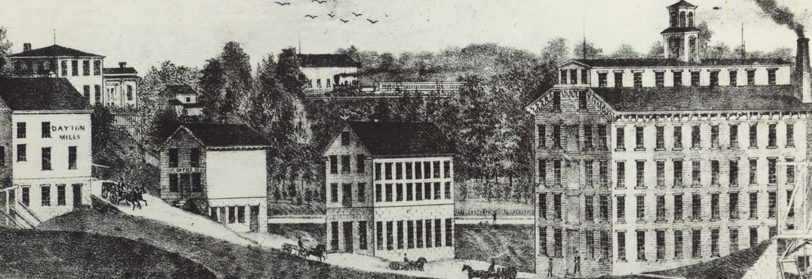
The women who settled the Illinois frontier in the 1820s had to be hard-working, resourceful, determined, and tough. Barbara Grove Green, who, with her husband John, led a small band of pioneers from Ohio to Illinois in 1829, was surely that. She may have imagined her life to be settled, living in Licking County, Ohio, with her husband and seven children, but at the age of forty, John decided to move west. He found a suitable place in Illinois, on the Fox river, four miles above the junction with the Illinois river and returned to announce that they would leave immediately, although it was late in the fall. Ignoring advice to wait until spring, a group of twenty-four men, women and children left for the west. John and Barbara were the senior members of the group, at 40 and 37; in addition there were three young couples in their twenties and six young unmarried men.
The first years were difficult ones. The small cabin where the group spent the first winter was replaced as soon as the saw mill was up and running. Two more children were born in Illinois: Rebecca in 1830 and Isaac in 1833. During the Indian Creek massacre scare, Barbara walked the four miles from Dayton to Ottawa with the rest of the family, carrying the baby, Rebecca, who cried if anyone else carried her.
Homemaking chores would have consumed her time. In the early days, these would have included salting and preserving the plentiful prairie chickens and quail that her sons trapped during the winter. Life became a little easier after the grist mill was in operation and she no longer had to grind wheat in a hand grinder. With yarn from the woolen mill, she knit socks and long stockings for everyone. Along with all the necessary sewing and mending, she made candles, rag carpets, and all the many other needs of a self-sufficient household.
Maud Green remembered her grandmother Barbara:
“Then in February it was carpet-rag time and we all sewed & wound carpet-rags & sent them to the weaver. The new carpet went in the “sitting room” and the others were moved back until at last they reached the kitchen & were worn out there. I can just remember Grandma making candles for us to carry upstairs. They were afraid to have us carry a lamp, but we had lamps as long ago as I remember. Grandma spent her time knitting socks and long stockings for all of us, out of factory yarn, and we had woolen underwear, skirts and dresses made of factory flannel.”
Barbara led a long life as the matriarch of the Green clan. When she died in Dayton, May 3, 1886, at the age of 93, she was remembered with affection in her obituary:
Granma Green, the oldest settler in the county, died Wednesday morning, at the age of 84 [sic] years. She was of a kind, benevolent disposition and was well beloved by her wide circle of relatives, friends and acquaintances by whom she will be greatly missed.1
- Ottawa (Illinois) Free Trader, 8 May 1886




